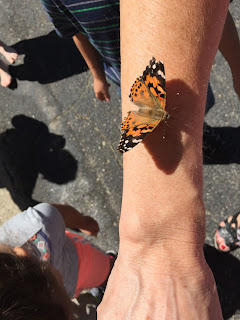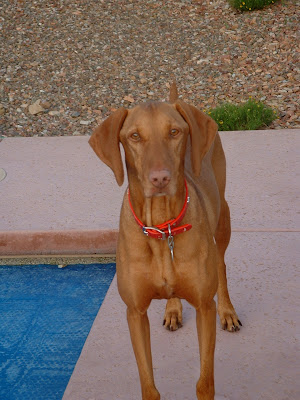Finding My Cremaster, my anchor in prayer
About a month ago I watched a beautiful green and black stripped caterpillar as it clung to the stem of a potted parsley plant on the rectory deck. It stayed in one place for days, and then suddenly was gone. I wondered if it had eaten its fill and finally wandered off to create its cocoon and begin its long slow transformation into a butterfly. Or maybe not. I’ve read that caterpillars can live in denial of the road before them, remaining a caterpillar can prolonging the chrysalis stage for up to a year.
However, when the caterpillar begins to build its chrysalis it forms a spiny protuberance at the end of its abdomen called a cremaster. The cremaster is like a button or patch of velcro, holding the pupa, the dissolved caterpillar, in place within the cocoon. It’s the anchor point from which the caterpillar hangs.
Spiritually speaking there is a place where we too are fastened, no going backward, no going forward, or turning. We are fastened and everything else goes on around us. It’s a still point inside each one of us that calls us to take notice. It’s the place where prayer resides, deep inside. It’s the place where transformation takes place, where we, anchored to God, dissolve from our old self and are reborn into a new self, a person who is just a little closer to God and a little more aware of one’s purpose in life.
Sue Monk Kidd, in her book, When the Heart Waits, Spiritual Direction for Life’s Sacred Questions, ponders this still place, the place of uncertainty, the place of darkness, the place of new birth. She suggests that this is a place of prayer, that our cremaster is an anchor in prayer where we attach ourselves to God. And the things that make us anxious, fret and squirm can find a resting place by focusing on the anchor, the center, the cremaster of human heart.
The hard part about this is it requires waiting. Like the dissolved caterpillar in its pupa state, waiting can feel chaotic. And so the actual waiting is difficult, because it also requires the capacity to wait in the unknown, wondering if there is a God and how God will show up.
She writes that there are three ways to engage in prayer as waiting:
One way is to wait in prayer like Mary, who took time out of her busy schedule with a house full of guests, to sit at Jesus’ feet and listen. God is always doing something just before we become aware of it.
Sue Monk Kidd tells the story of a woman who spent her entire career working harder and harder until she became bitter and burned out. She took time away, to just walk in the woods and rest. Her prayers were feverish, pleading with God for things to change.
One day she came upon a spider weaving a web between two trees. She sat and watched for a long time. It was beautiful. And suddenly she became aware that this was prayer, that taking time to just be quiet so that she could become attentive to what God was already weaving in her was prayer. And so she started taking time to notice what was going in her life, and where God was already at work.
A second way is to sit while Jesus prays. On his last night, before he was turned over to the authorities, Jesus asked the disciples to sit here, while he prayed. The hour was late, and Jesus prayed long into the night. Sit here, while I pray. In a moment of silence we discover that Jesus is already praying in us, always praying in and through us. The emphasis once again is not on what I am doing, but on what God is doing.
Ultimately we do not create ourselves, heal, or transform ourselves. We posture ourselves in ways that allow God to heal, transform, and create us. Waiting is letting God be God.
A third way of prayer is to sit expectantly, waiting for God in hope. That is the final message that Jesus leaves us with in the Gospel this morning. Waiting for God is like labor, like birth pangs, it is difficult and even painful, but God always comes. God is here even now.
We’re near the end of the long season after Pentecost. Advent begins in just two Sundays. And so the scripture readings leading up to Advent point us toward that season, that we will be invited into a time of stillness, of expectant waiting, of engaging in prayer as a spiritual practice of waiting.
Lamar Williamson, who is scholar on the Gospel of Mark, reminds us that every Gospel writer leaves the church with a challenge. John calls the church to love one another. Matthew and Luke call the church to engage in mission to the Gentiles, to those who are “other.”
But perhaps the most daunting challenge for Christians in the North American context, so set on instant gratification, is this one left for us by Mark: “Beware,… keepawake,” watch, resist those who would lead one down a false path, hold out for the coming of Jesus.
On this Sunday before Thanskgiving, let us take some time in stillness. To be attentive to the possibility that God is already stirring something a new in us, us as individuals, us as a community. Sit at Jesus’ feet and open your heart. Sit and be still, mindful that Jesus is praying in you. Sit and be still, waiting in hope. Into this hope, may there be the capacity to feel grateful for all that God is doing in you, through you, in us and through us. Let us be attentive to this waiting, expecting that Jesus is coming, will come, anew into our lives in the year ahead.
a reflection on Proper 28: Daniel 12:1-3, Mark 13:1-8




Comments
Elaine
www.theedgeishere.wordpress.com